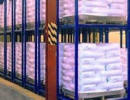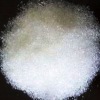| Aadhunik Industries is a manufacturing group company. Aadhunik Industries is pioneer manufacturers of Specialty Chemicals, Pharmaceutical Excipients, Food Fragrance & Flavor chemicals in India. It has toll manufacturers and representatives in UAE, Europe, Canada & USA and agents & customers in all countries like USA, Canada, Europe, UAE Dubai, South Africa, Tanzania, Kenya, Egypt, Nigeria, Uganda, Turkey, Mexico, Brazil, Chile, Argentina, Malaysia, Indonesia, Thailand, Korea, Japan, etc. Halal & Kosher certified Lithium Carbonate and other Lithium Salts like Lithium Bromide, Lithium Chloride, Lithium Citrate, Lithium Molybdate, Lithium Tungstate Manufacturers made in a FDA-GMP plant is offered. |
| The units have one or more of the certifications like FDA GMP, ISO 9001, ISO 22000, HACCP, REACH, Kosher & Halal and DMF support is available. |




Lithium Chloride SDS MSDS Sheet of Manufacturers
Lithium Chloride Anhydrous, Solution, ACS Grade Specifications etc of Manufacturers
Lithium Chloride GHS SDS, Safety Data Sheet
MSDS Sheet, Material Safety Data Sheet
1. Product Identification
Product Name/Synonyms: Lithium Chloride
CAS No.: 7447-41-8
EINICS EC-No.: 231-212-3
Molecular Weight: 42.39
Chemical Formula: LiCl
Recommended usage: Industrial Manufacturing.
Suppliers: As per letterhead.
2. Hazards Identification
GHS, Globally Harmonized System Classification in accordance with 29 CFR 1910
Classification according to Regulation (EC) No 1272/2008
Acute toxicity, oral Category 4, H302
Skin irritation Category 2, H315
Serious eye damage/eye irritation Category 2A, H319
Labeling according to GHS & Regulation (EC) No 1272/2008
GHS Label Elements  Irritant |
Signal Words: Warning
Hazard statements:
H302: Harmful if swallowed.
H315: Causes skin irritation.
H319: Causes serious eye irritation.
Precautionary statements:
P262: Do not get in eyes, on skin, or on clothing.
P264: Wash skin thoroughly after handling.
P280: Wear protective gloves/protective clothing/eye protection/face protection.
P270: Do not eat, drink or smoke when using this product.
P330: Rinse mouth.
P301+312: IF SWALLOWED: Call a POISON CENTER or doctor/physician if you feel unwell.
P305+ P351 + P338 IF IN EYES: Rinse cautiously with water for several minutes. Remove contact lenses, if present and easy to do. Continue rinsing.
P337+P313 If eye irritation persists: Get medical advice/ attention.
P501: Dispose of contents/container to authorized agents only.
Labeling in accordance with Directive 67/548/EEC:
Symbols: Xi Irritant; Xn = Harmful.
R36= Irritating to eyes.
R38 Irritating to skin.
R22= Harmful if swallowed.
For the full text of the H-statements & R-phrases mentioned in this Section, see Section 16.
3. Composition/Information on Ingredients
Product Name/Synonyms: Lithium Chloride
CAS No.: 7447-41-8
EINICS EC-No.: 231-212-3
4. First Aid Measures
Always get medical attention after the first aid is over.
Inhalation: If inhaled, remove to fresh air. If not breathing, give artificial respiration. If breathing is difficult, give oxygen and get medical attention immediately.
Ingestion: Never give anything by mouth to an unconscious person. Get medical attention.
Skin Contact: Immediately flush skin with plenty of water for at least 15 minutes while removing contaminated clothing and shoes. Get medical attention. Wash clothing and shoes before reuse.
Eye Contact: Immediately flush eyes with plenty of water for at least 15 minutes, lifting lower and upper eyelids occasionally. Get medical attention immediately.
Notes to Physician: Treat symptomatically.
5. Fire Fighting Measures
Fire Extinguishing Media: Water spray, dry chemical, alcohol foam, or carbon dioxide.
Special hazards arising from the substance or mixture: Hydrogen chloride gas, Lithium oxides.
Special Information: In the event of a fire, wear full protective clothing and NIOSH-approved self-contained breathing apparatus with full face piece operated in the pressure demand or other positive pressure mode. Use water to cool tanks, cisterns, or containers close to the heat source or fire. Take wind direction into account. Prevent the products used to fight the fire from going into drains, sewers, or waterways.
6. Accidental Release Measures
Small Spill: Use appropriate tools to put the spilled solid in a convenient waste disposal container.
Large Spill: Stop leak if without risk. Do not touch spilled material. Prevent entry into sewers, basements or confined areas. Use personal protective equipment. Avoid breathing vapors, mist or gas. Ensure adequate ventilation. Pick up the solid material (If in solution then absorb in inert material) and dispose of as hazardous waste. Keep in suitable, closed containers for disposal.
7. Handling and Storage
Avoid contact with skin and eyes. Avoid inhalation of dust, vapour or mist. Do not eat, drink or smoke when using this product. Keep in a tightly closed container, stored in a cool, dry, ventilated area. Avoid contact with skin and eyes. Avoid formation of dust and aerosols. Protect against physical damage. Containers of may be hazardous when empty since they retain product residues (dust, solids); observe all warnings and precautions listed for the product.
8. Exposure Controls/Personal Protection
Airborne Exposure Limits: Contains no substances with occupational exposure limit values.
Ventilation System: A system of local and/or general exhaust is recommended to keep employee exposures as low as possible. Local exhaust ventilation is generally preferred because it can control the emissions of the contaminant at its source, preventing dispersion of it into the general work area. Please refer to the ACGIH document, Industrial Ventilation, A Manual of Recommended Practices, most recent edition, for details.
Personal Respirators (NIOSH Approved): For conditions of use where exposure to dust or mist is apparent and engineering controls are not feasible, a particulate respirator (NIOSH type N95 or better filters) may be worn. If oil particles (e.g. lubricants, cutting fluids, glycerin, etc.) are present, use a NIOSH type R or P filter. For emergencies or instances where the exposure levels are not known, use a full-face positive-pressure, air-supplied respirator. WARNING: Air-purifying respirators do not protect workers in oxygen-deficient atmospheres.
Skin Protection: Wear impervious protective clothing, including boots, gloves, lab coat, apron or coveralls, as appropriate, to prevent skin contact.
Eye Protection: Use chemical safety goggles and/or full face shield where dusting or splashing of solutions is possible. Maintain eye wash fountain and quick-drench facilities in work area.
9. Physical and Chemical Properties
Appearance: Fine white hydroscopic powder.
Odor: odorless.
Solubility: Soluble in water.
Relative Density: 2.07
pH: Approximately 6.
% Volatile by volume @ 21C (70F): 0
Molecular Weight: 42.39
Chemical Formula: LiCl
Melting Point: 550C - literature.
Boiling Point: 1360C - literature.
10. Stability and Reactivity
Stability: Stable under ordinary conditions of use and storage.
Hazardous Decomposition Products: Hydrogen chloride along with lithium oxide may form when heated to decomposition.
Hazardous Polymerization: Will not occur.
Incompatibilities: Excessive heat, Strong oxidizers and acids.
Conditions to Avoid: Heat, dusting, moisture and incompatibles.
Risk of explosion: Exothermic reaction with alkali metals, halogen-halogen compounds and strong acids.
11. Toxicological Information
LD50 Oral - Rat - 526 mg/kg(Lithium chloride)
LC50 Inhalation Rat: > 5.57 mg/l; 4 h ; aerosol (Lithium chloride)
Carcinogenic Effects: Not a reported carcinogen by IARC, NTP, ACGIH, OSHA.
Germ cell mutagenicity: Not available.
Reproductive toxicity: Not available.
Developmental Effects: Not available.
Teratogenicity: Not available.
The toxicological properties have not been fully investigated.
12. Ecological Information
Harmful to aquatic life.
Toxicity
Toxicity to fish: static test EC50 - Oncorhynchus mykiss (rainbow trout) - 158 mg/l - 96 h.
Toxicity to daphnia and other aquatic invertebrates: EC50 - Daphnia magna (Water flea) - 249 mg/l
Persistence and Degradability: Soluble in water. Persistence is unlikely.
Mobility in soil: No data available. Will be mobile in the environment due to its water solubility.
PBT & vPvB: This substance/mixture contains no components considered to be either persistent, bioaccumulative and toxic (PBT), or very persistent and very bioaccumulative (vPvB) at levels of 0.1% or higher.
13. Disposal Considerations
Whatever cannot be saved for recovery or recycling should be managed in an appropriate and approved waste disposal facility. Processing, use or contamination of this product may change the waste management options. State and local disposal regulations may differ from federal disposal regulations. Dispose of container and unused material in accordance with legal requirements.
14. Transport Information
DOT & ADR/RID: Not regulated
TDG: Not regulated
IATA: Not regulated
IMDG/IMO: Not regulated
15. Regulatory Information
USA:
SARA 302: Not applicable.
SARA 313: Not applicable.
California Proposition 65: This product does not contain any Proposition 65 chemicals
16. Other Information
Hazard Symbol:
Xi = Irritant; Xn = Harmful.
Risk Phrases:
R36/38= Irritating to eyes and skin.
R22= Harmful if swallowed.
H302: Harmful if swallowed.
H315: Causes skin irritation.
H319: Causes serious eye irritation.
**************************
Our company provides this MSDS sheet in good faith but makes no representation as to its comprehensiveness or accuracy. This SDS sheet is intended only as a guide to the appropriate precautionary handling of the material by a properly trained person using this product. The above information has been compiled from various sources and has the possibility of discrepancy and being out-dated information. Individuals receiving the information must exercise their independent judgment and do further search in determining its appropriateness for a particular purpose. In no case shall our company be liable to loss or damages by the product user.
**************************
Lithium Chloride Anhydrous Solution n ACS Grade Manufacturers
Aadhunik Industries
Ankleshwar Gujarat &, Mumbai, India
TEL: (OFFICE) 91-22-23774610, 23723564.
e-mail: info@aadhunikindustries.com

Exports to USA, Canada, UAE, Dubai, South Africa, Tanzania, Kenya, Nigeria, Egypt, Uganda, Turkey, Mexico, Brazil, Chile, Argentina, Europe Netherlands, Italy, Spain, Germany, Portugal, France, Malaysia, Indonesia, Thailand, Norway, Ukraine, Korea, Japan, Vietnam, etc.
Copyright and Usual Disclaimer is Applicable January 20, 2022